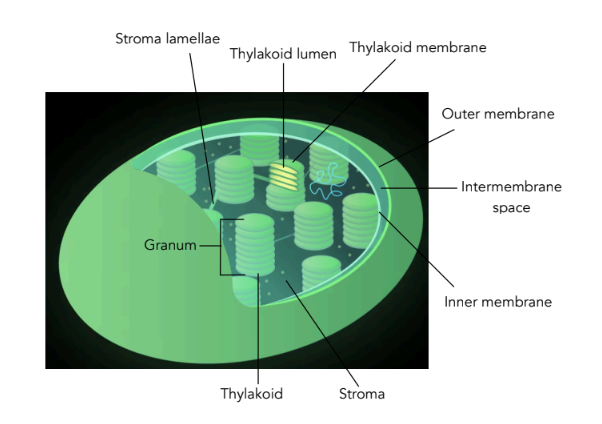6.1- Chloroplast ANATOMY
1/10
There's no tags or description
Looks like no tags are added yet.
Name | Mastery | Learn | Test | Matching | Spaced |
|---|
No study sessions yet.
11 Terms
Photosynthesis:
biological process performed by photoautotrophs (plants, some bacteria and protists);
captures energy from sunlight and converts it to chemical energy stored in the form of glucose.
Where does photosynthesis take place?
chloroplasts of plants or protists.
Overall Reaction for photosynthesis
6CO2 + 6H2O → C6H12O6 + 6O2
Chloroplast
organelle that is only found in eukaryotic photoautotrophs
contains chlorophyll.
Chlorophyll
light absorbing pigment with a porphyrin ring (contains central Mg atom)
similar structure to hemoglobin.

Chloroplast Structure (external to internal):
1. Outer membrane.
2. Intermembrane space.
3. Inner membrane.
4. Stroma (cytoplasm of chloroplast).
a. Stroma lamellae: connect thylakoids together.
b. Thylakoids: membrane-bound flattened disks found in the stroma.
i. Thylakoid membrane: contain chlorophyll.
ii. Thylakoid lumen: space enclosed by thylakoid membrane
iii. Granum: stack of thylakoids
Stroma lamellae:
connect thylakoids together.
Thylakoids
membrane-bound flattened disks found in the stroma.
Thylakoid membrane
contain chlorophyll
Thylakoid lumen:
space enclosed by thylakoid membrane
Granum:
stack of thylakoids